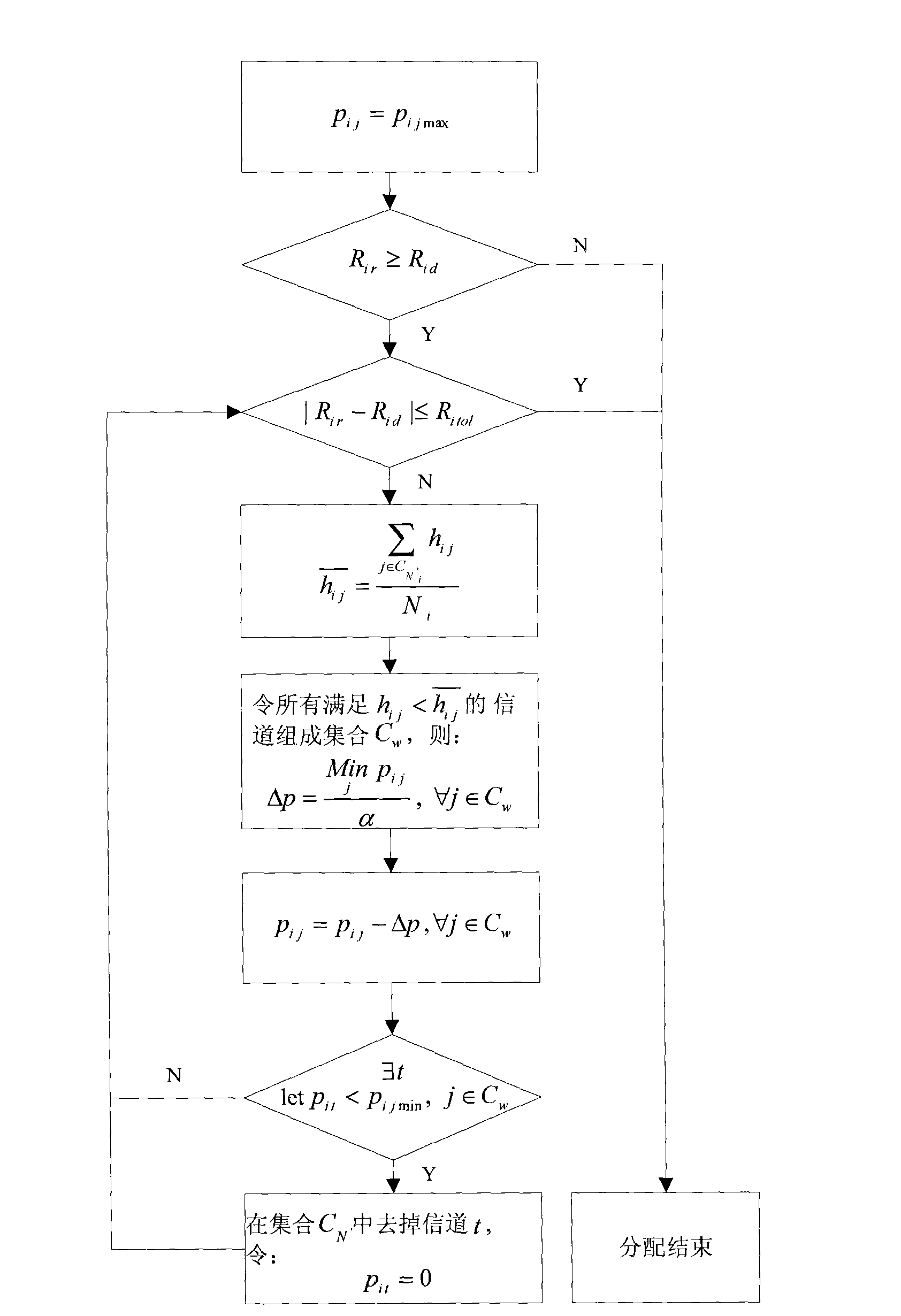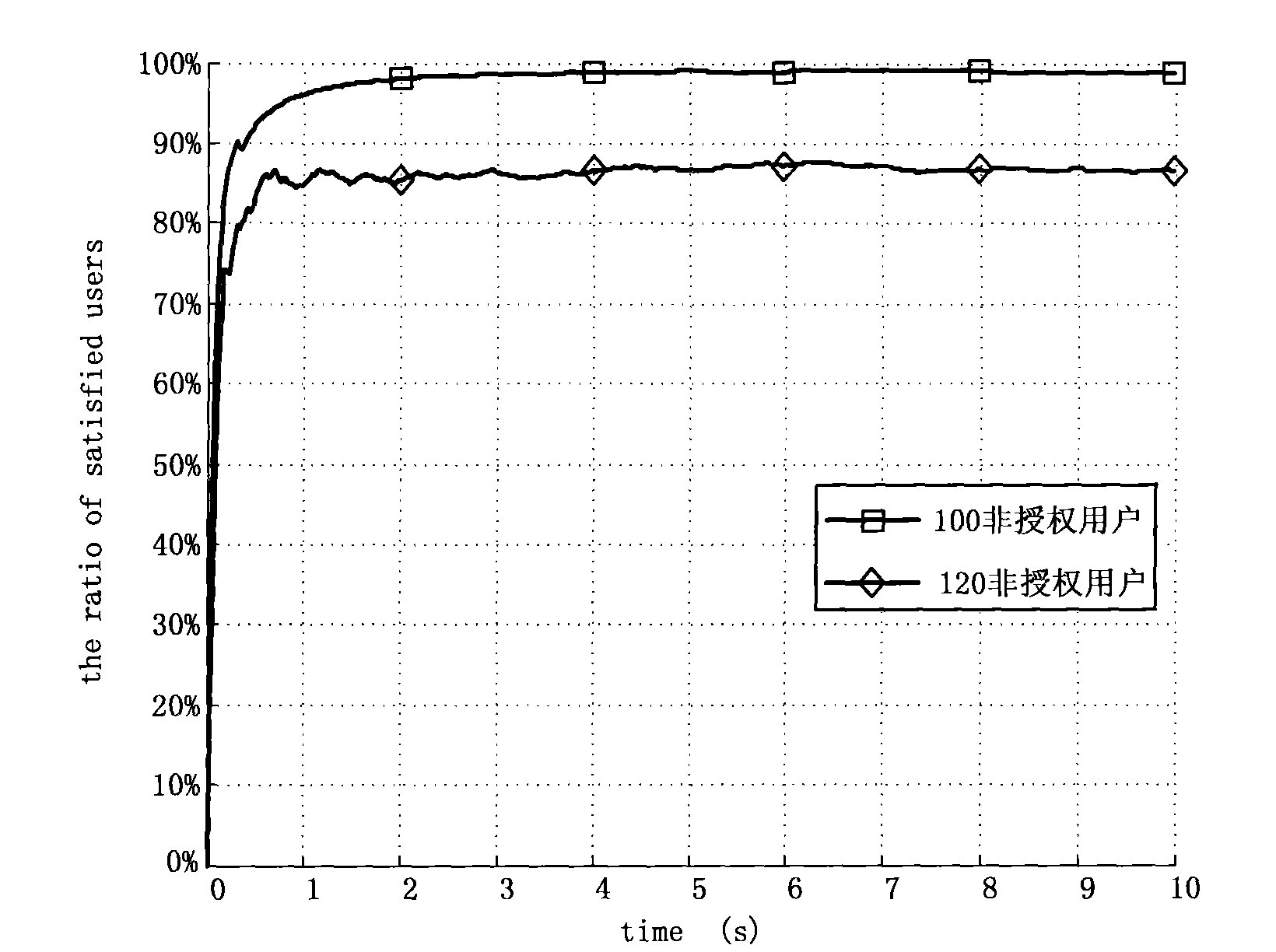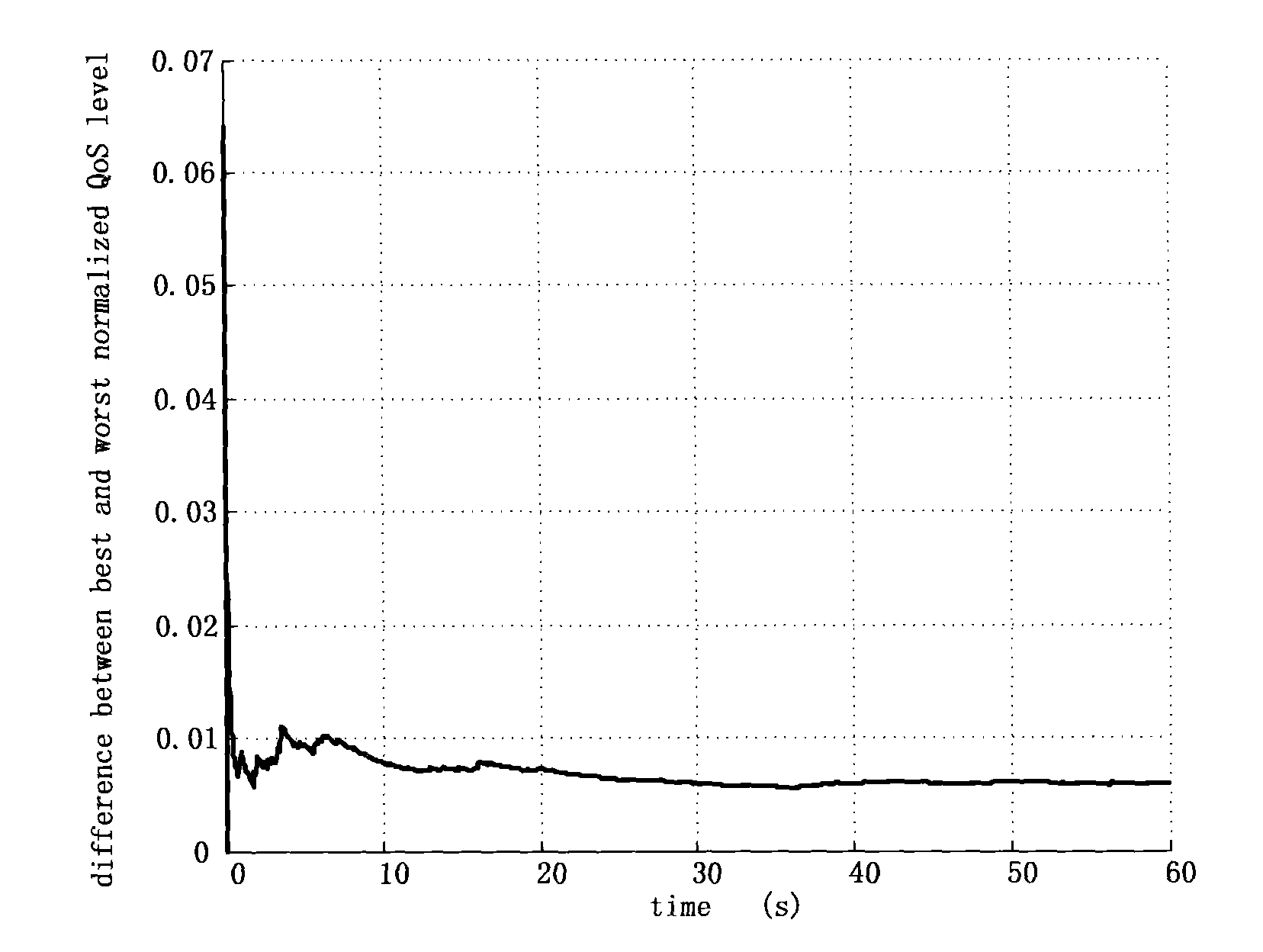Fairness-based power and channel joint allocation method for cognitive radio system
A cognitive radio and joint allocation technology, applied in the field of joint allocation of power and channels, can solve the problems of not considering resource fairness between cells, prolonging the allocation time period, and not adapting to the fast time-varying of idle spectrum.
- Summary
- Abstract
- Description
- Claims
- Application Information
AI Technical Summary
Problems solved by technology
Method used
Image
Examples
Embodiment Construction
[0107] The specific implementation of the method is completed by cooperation of the cognitive base station and the unauthorized user. It is assumed that all channel information is known before power and channel allocation. Firstly, the cognitive base station determines the maximum available resources for each unlicensed user in turn. The specific steps are: 1) determine the candidate channel set according to formula (14); 2) determine the maximum power on the candidate channel according to formula (15). Then, the cognitive base station will p ijmax sent to each unauthorized user. Unauthorized users get p ijmax Finally, follow the steps below to get the channel and corresponding power that you can use at last: 1) Calculate P ij d , and get p ijmin ; 2) Finally follow figure 1 Proceed with allocation to get the final resource.
PUM
 Login to View More
Login to View More Abstract
Description
Claims
Application Information
 Login to View More
Login to View More - R&D
- Intellectual Property
- Life Sciences
- Materials
- Tech Scout
- Unparalleled Data Quality
- Higher Quality Content
- 60% Fewer Hallucinations
Browse by: Latest US Patents, China's latest patents, Technical Efficacy Thesaurus, Application Domain, Technology Topic, Popular Technical Reports.
© 2025 PatSnap. All rights reserved.Legal|Privacy policy|Modern Slavery Act Transparency Statement|Sitemap|About US| Contact US: help@patsnap.com



